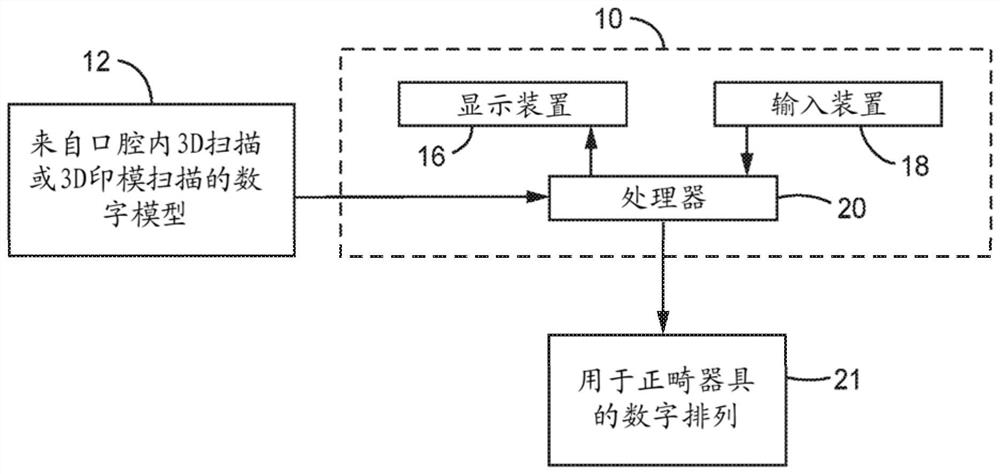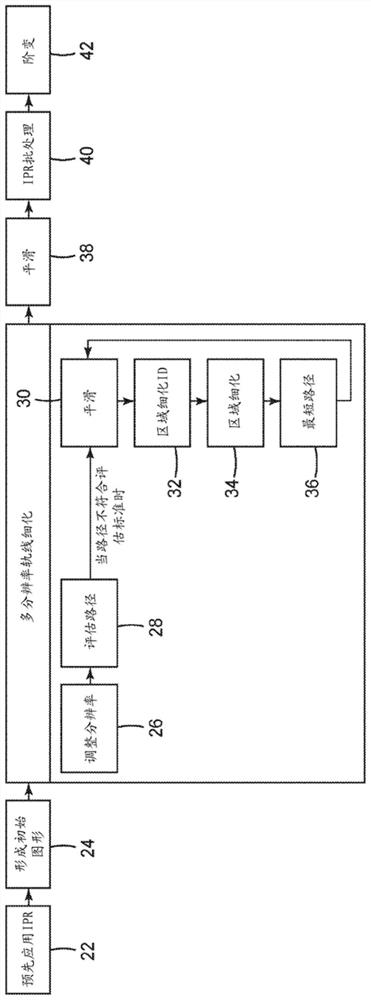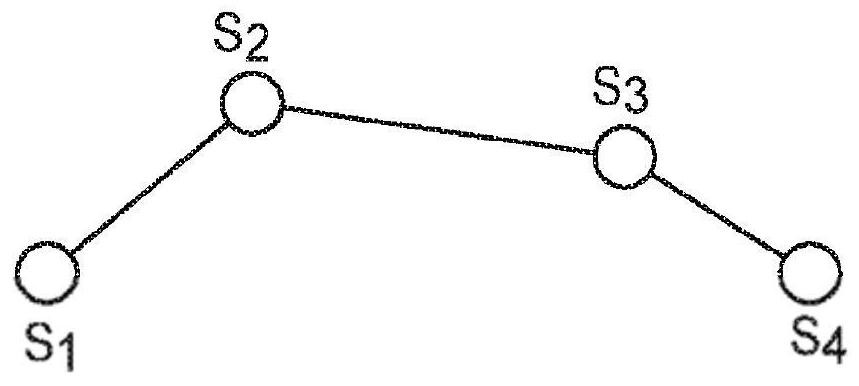An automated method for the generation of intermediate orthodontic digit alignments
A digital and algorithmic technology, applied in the field of automation for the generation of intermediate orthodontic digital arrangements, can solve problems such as complex search spaces
- Summary
- Abstract
- Description
- Claims
- Application Information
AI Technical Summary
Problems solved by technology
Method used
Image
Examples
Embodiment Construction
[0013] Embodiments of the invention include a system, possibly partially or fully automated, to generate a set of intermediate orthodontic arrangements that move a set of teeth from a malocclusion to a final arrangement or allow Partial treatment from one state to another (e.g. from an initial state to a specific intermediate state). Each arrangement ("state" or "arrangement") of teeth is represented as a node in a graph, and robot motion planning is used to expand the graph and search for paths to valid states. These states or arrangements may be a digital representation of the arrangement of the teeth at a particular stage of treatment, where the representation is a digital 3D model. For example, digital arrays can be used to make orthodontic appliances such as invisible aligners to move teeth along a treatment path. For example, invisible tray aligners can be made by converting a digital arrangement into a corresponding physical model and thermoforming a sheet of material ...
PUM
 Login to View More
Login to View More Abstract
Description
Claims
Application Information
 Login to View More
Login to View More - R&D
- Intellectual Property
- Life Sciences
- Materials
- Tech Scout
- Unparalleled Data Quality
- Higher Quality Content
- 60% Fewer Hallucinations
Browse by: Latest US Patents, China's latest patents, Technical Efficacy Thesaurus, Application Domain, Technology Topic, Popular Technical Reports.
© 2025 PatSnap. All rights reserved.Legal|Privacy policy|Modern Slavery Act Transparency Statement|Sitemap|About US| Contact US: help@patsnap.com



